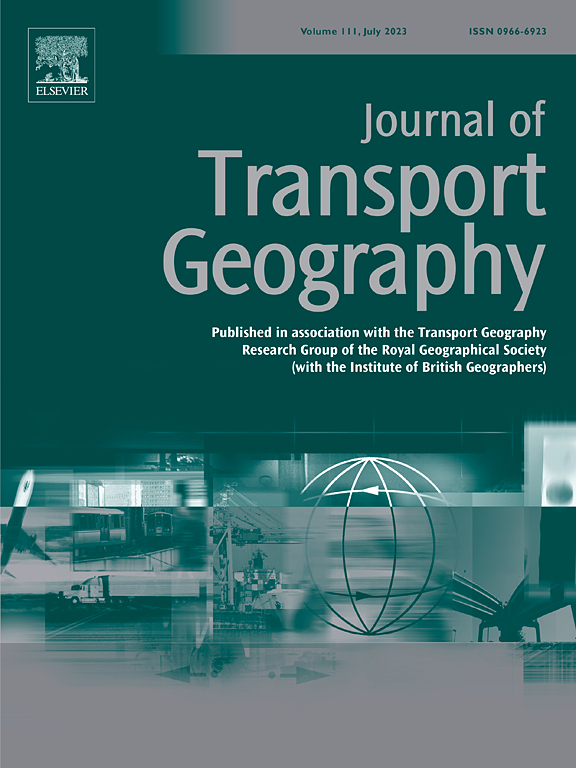基于人类移动轨迹的语义嵌入理解多模式旅行模式
IF 5.7
2区 工程技术
Q1 ECONOMICS
引用次数: 0
摘要
随着越来越多的人在一次旅行中使用多种交通方式,了解多式联运模式对于设计更高效和可持续的交通系统至关重要。然而,多式联运中固有的时空依赖性使得准确识别这些模式具有挑战性。因此,本研究旨在运用大语言模型(LLM)来更好地理解城市居民复杂的多模式出行模式。首先,我们开发了一种基于变化点的方法,将人类的移动轨迹划分为不同的旅行段,然后使用光梯度增强机(Light Gradient Boosting Machine, LightGBM)来推断每个段的旅行模式。接下来,提取多模态旅行特征并以文本形式表示,使用变形金刚的双向编码器表示(BERT)将其转换为语义嵌入。最后,我们应用基于密度的带噪声应用空间聚类(DBSCAN)算法来测量这些嵌入之间的语义相似性,并识别不同的多模态旅行模式。采用来自北京182名志愿者的17621条出行轨迹对该方法进行了验证,成功识别出35种具有代表性的多式联运模式。此外,一些异常模式表明了交通设施的潜在缺陷,为交通规划和管理提供了有价值的见解。综上所述,本研究的科学贡献在于通过将不同的、离散的多模式旅行特征嵌入到统一的、连续的向量空间中,将多模式旅行模式识别重新定义为语义相似性度量问题。本文章由计算机程序翻译,如有差异,请以英文原文为准。
Understanding multimodal travel patterns based on semantic embeddings of human mobility trajectories
As more people use multiple transport modes in a single trip, understanding multimodal travel patterns becomes essential for designing a more efficient and sustainable transportation system. However, the inherent spatiotemporal dependencies in multimodal travel make it challenging to recognize these patterns accurately. Therefore, this study aims to apply the large language model (LLM) to better understand the complex multimodal travel patterns of urban residents. First, we develop a change point-based method to divide human mobility trajectories into travel segments and then use the Light Gradient Boosting Machine (LightGBM) to infer the travel modes of each segment. Next, multimodal travel features are extracted and represented in textual forms, which are transformed into semantic embeddings using the Bidirectional Encoder Representations from Transformers (BERT). Finally, we apply the Density-Based Spatial Clustering of Applications with Noise (DBSCAN) algorithm to measure semantic similarity between these embeddings and identify different multimodal travel patterns. The proposed approach is validated using 17,621 mobility trajectories from 182 volunteers in Beijing, successfully identifying 35 representative multimodal travel patterns. Additionally, some abnormal patterns indicate underlying deficiencies in transportation facilities, providing valuable insights for transportation planning and management. In summary, the scientific contribution of this study is to redefine multimodal travel pattern recognition as a semantic similarity measurement problem by embedding diverse and discrete multimodal travel features into a unified and continuous vector space.
求助全文
通过发布文献求助,成功后即可免费获取论文全文。
去求助
来源期刊

Journal of Transport Geography
Multiple-
CiteScore
11.50
自引率
11.50%
发文量
197
期刊介绍:
A major resurgence has occurred in transport geography in the wake of political and policy changes, huge transport infrastructure projects and responses to urban traffic congestion. The Journal of Transport Geography provides a central focus for developments in this rapidly expanding sub-discipline.
 求助内容:
求助内容: 应助结果提醒方式:
应助结果提醒方式:


